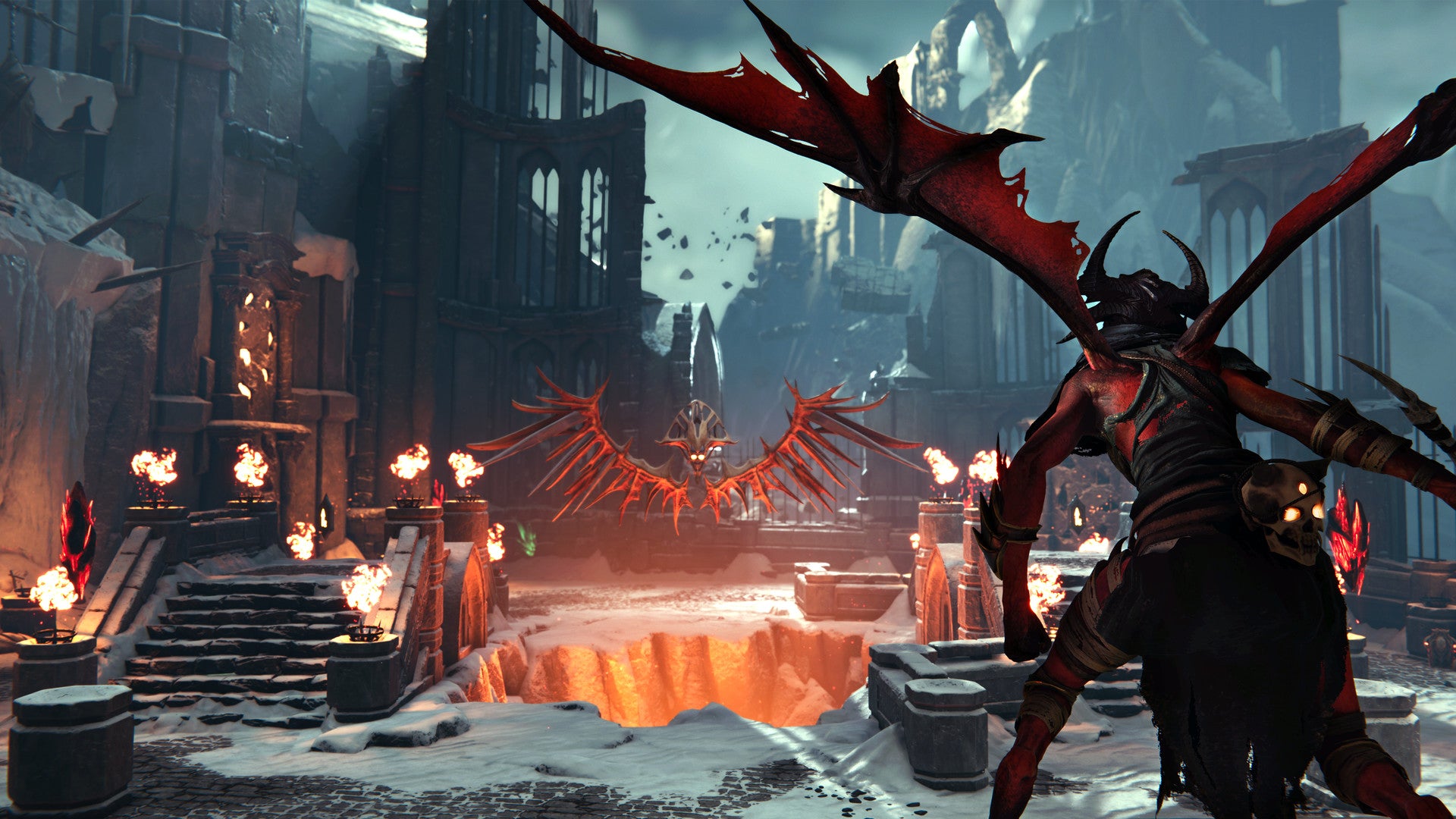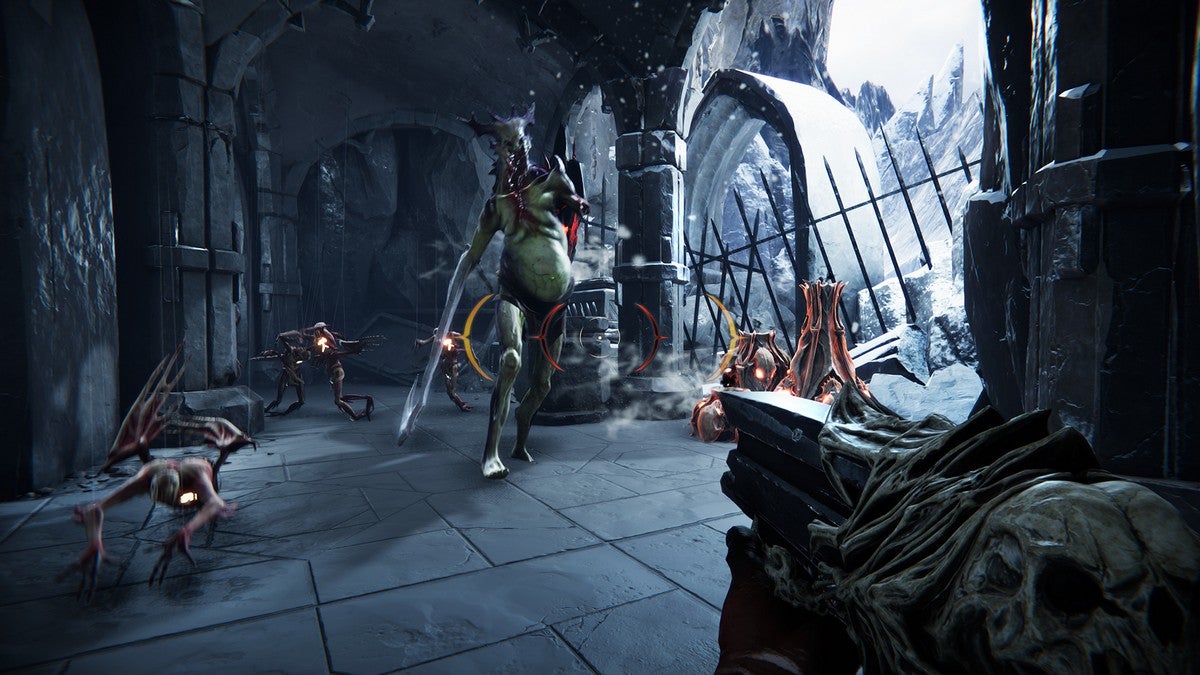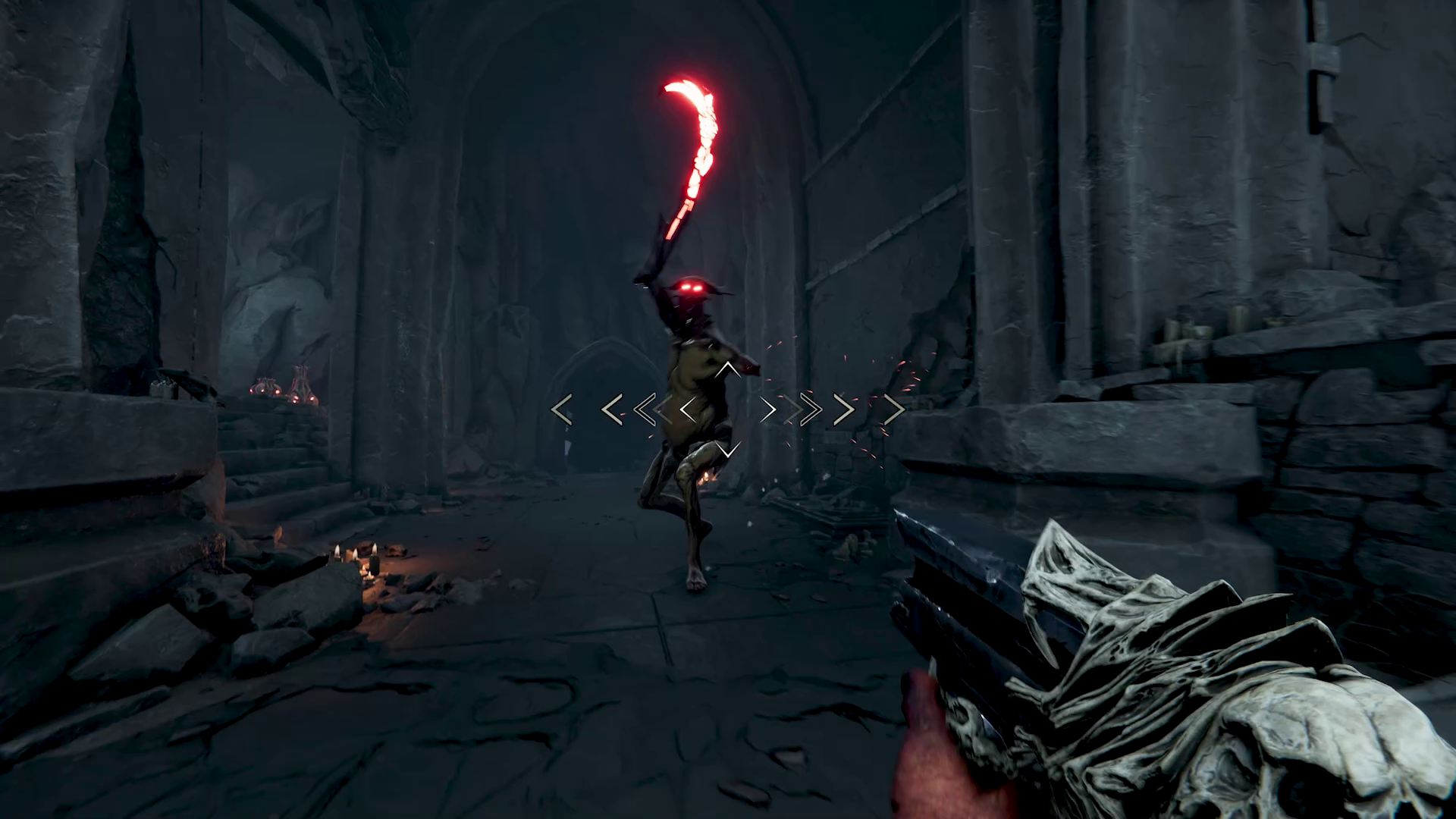Metal: Hellinger is a weighty metal beat FPS created by The Outsiders, a group of industry veterans who had recently worked in studios like Machine Games, Guerilla Games, Fatshark, and DICE and that’s just the beginning.
For a couple of years, this gathering of capable people has been dealing with a shooter that takes thoughts from individuals like destruction and Guitar Hero and joins them in an exceptionally remarkable way. I feel like I ought to specify that I’m not keen on cadence games in any structure. I lived it up playing my companion Beat Saber. In any case, it would make me not liked to get it for myself or attempt different types of this class.
Anyway, for what reason am I keen on this game then? All things considered, the response is in the name. As a metal music darling, I was unable to miss the chance to play a game where you go around shooting devils in the face while paying attention to some quality weighty metal. Presently different games have attempted to do this before even destruction did, yet I don’t think about that genuine metal music.
The game is not a major wad of tension about the thought processes of your activities. You are a devil called The Unknown, who plunges into the pits of the Thousand Hells, weapons and music shooting with equivalent force, to get back at the Red Judge. I realize this may not seem like a new thing, yet when I began playing, I wasn’t keen on the story. I simply needed to butcher such countless devils that crossed my path. Now what gives? Metal: Does Hellinger have an edge over different games attempting to dig into this classification? You discover that playing early Metal: Hellinger like a normal FPS game will not get you far.

The music isn’t only there to siphon you up and give you an adrenaline rush as you kill evil presences. The music is a significant ongoing interaction component that is similarly basically as significant as the shooting or cutting; perhaps more. Performing activities to the beat will expand your Fury, making the music more extreme with each new edge. More Fury likewise implies more harm, so the better you are at beating the beat, the more destruction you can unleash. Also, we should be serious, devastation is something this game calls for!
Something that quickly stands apart while playing Metal: Hellinger is how hard it makes you work for the music. In many games, the music has two degrees of force: quiet during investigation and activity stuffed during battle. Here you have four levels. At level one, you don’t get substantially more than the beat, yet as you progress through the levels, the track gets stronger and more perplexing.
The full tune, complete with vocals, just beginnings at level four. Needless to say, you’ll need to be on level four to partake in the music in the entirety of its greatness. Arriving is especially easy on the off chance that you can adhere to the cadence, however, remaining there can be an issue. The Fury check will deplete if you play out no activities or on the other hand assume you perform them inadequately.
Presently you might be contemplating whether the music merits opening the fourth level, all around let me simply say OK! Metal: Hellsinger’s soundtrack was scored by writer couple Two Feathers and elements exhibitions by weighty metal symbols Serj Tankian of System of a Down, Alissa White-Glüz of Arch Enemy, Matt Heafy of Trivium, Randy Blythe of Lamb of God, and a lot more. As a Metal Fanatic and FPS gamer, this is by a wide margin perhaps the best mix that consistently crossed my ears and hands while I was playing.
Computer games and weighty metal music have long imparted a passing interest to each other. Look no farther than the iconography of Doom, or Tim Schafer’s Brütal Legend, for proof of that. However, it was during the 00s – during the rule of music and mood games like Guitar Hero – that the connection was generally self-evident. Consider me as a real part of the positions of the people who found out about Pantera and Megadeth via the plastic instrument.

Which is the reason the current year’s Metal: Hellinger is on my radar. The game is a cross between a first-individual shooter and a beat game: by matching your shooting to the rhythm of the music, you construct a score multiplier that builds the harm you bargain. We’ve seen this before in BPM: Bullets Per Minute, however, Metal: Hellinger brings its setting and unique weighty metal soundtrack to the party.
In 2016, imaginative chief David Goldfarb was playing through the new emphasis of Doom and supplementing it with his soundtrack. “I was paying attention to Meshuggah… and eventually my shots covered with the cadence, and I thought: ‘Goodness, that is cool.'” Along with a couple of other clever thoughts -, for example, playing as the evil presence as opposed to the devil tracker – this acknowledgment laid the early basis for Metal: Hellinger.
“I truly needed to do metal such that I didn’t feel like anyone had done previously,” says Goldfarb. “Destruction has its techno metal. Brütal Legend has its authorized melodies – and we realized we were unable to bear to get authorized tunes.”
He moved toward the writer couple Two Feathers, comprised of performers Elvira Björkman and Nicklas Hjertberg, who had worked with him previously. They set off to make their metal record, planned without any preparation. “We have done heaps of dynamic music and bunches of games previously,” says Björkman. “[This time] we needed to bet everything … we should fix things such that intelligent that it could knock their socks off.”

You can evaluate a demo of Metal: Hellinger on Steam now, and as in all great cadence games, the exchange among music and interactivity feels mystical in its best minutes. The high-speed shooter activity sets up to contend with the craving to remain got into the cadence. Keeping up with the game’s 16x multiplier has a special reward, as well: that is the point at which the vocals kick in, so playing the game well is the main way you will hear the great rundown of visitor singers, including slippery metal symbols like System of a Down’s Serj Tankian.
Players have seen that specific weapons take into consideration higher scores than others, restricting your choices if you need to pursue the top competitor list scores – however, Goldfarb says that the demo is running on more seasoned code and that the scoring is being improved before discharge. This is similar as well because Hellinger truly feels like a cadence game instead of a shooter with attached melodic components, and beat games live and bite the dust by their lists of competitors. Games, for example, are not tied in with accomplishing flawlessness, yet rather that sensation of drawing only a tad chomped nearer to it with each playthrough. Like rehearsing an instrument, they provide you with the fulfillment of progressive authority.





